My bird-feeding habits are seasonal. In the spring and summer I let most of the birds fend for themselves. Natural food abounds and I like them to eat the larva and bugs on the trees and bushes. It’s cheaper and easier for me, and probably healthier for them. I do, though, offer some food year round. I toss a handful or two of peanuts to the jays most days. Sometimes I “hide” them in the driftwood feeder. Just for fun.
I also put out shelled unsalted peanuts for the chickadees and nuthatches year round.
And feed the hummers, constantly!
I change my feeding habits in the late fall, though, putting out suet for the woodpeckers and whoever else is interested, and filling the seed feeders with Black Oil Sunflower seeds or a mix, intending that food for the various sparrows, finches, and other songbirds.
The moment I put the seed out, though, the jays arrive en masse, like mosquitoes at a picnic. This seems to annoy Dennis even more than me. One morning he commented that “the little birds” weren’t getting any food because of the big bad jays. I commiserated. He wondered if I should stop putting out suet, for which the jays have such a passion. Would they give up and go away? I mentioned that they’re corvids, the smartest of the smart in Birdland, but he was hopeful. (It was quite endearing.) So, for a few days I tried this. But I felt guilty as all-get-out when the young flickers showed up looking for their fat rations. So that didn’t last long.
We started brainstorming. (Scheming would be a more honest word.) I thought about bird behaviour; Dennis thought about contraptions. Here’s a picture of contraption #1.
In the beginning, it worked. The sparrows and chickadees and nuthatches had no problem feeding from it, piece of cake. Even the flickers could manage it. But the floating top stymied the larger, more rambunctious Steller’s Jays. So the next day Dennis made a second one. By the time that one was up, though (less than twenty-four hours later) the jays had figured it out, were happily swinging from the first one, having flown in from below and grabbed on to the bottom of the suet cage. Jays 1, humans 0. Back to the drawing board.
Our friends were having a similar problem in their yard. They sent us a photo of the contraption they created. (Thanks Dee and John.) Unfortunately, they soon reported it didn’t work either. The jays reached right through the 3” grating. But they’ve renovated it since then, and it’s more jay-proof now. So far.
Finally, when we were out of town in November, the owner of a bird store listened to my sad story, which he’d heard before, a million times, and made some suggestions. One was to fill the feeders with pure millet for the sparrows and their friends because jays don’t like millet. I rushed home and put up a couple of millet-only feeders.
It took the jays no time at all to taste this new offering. Apparently they like it. Maybe Gabriola jays aren’t as fussy as non-island jays?
Suggestion number two was to use a tube feeder for the sparrows because jays can’t get at those. When I laughed (like crazy) the owner added two other ideas: trim the footrests to make it difficult for the jays to hold on; and push the rain guard down.
It took the jays less than twelve hours to figure out how to do this
So we initiated Plan B: trim the footrests. That solved the problem! The sparrows, including the towhees, are fine with shorter footrests. The jays, not so much. Not at all, in fact.
But the problem of how to protect some suet for the smaller birds remained. Dennis put on his thinking cap.
Then one afternoon we happened upon wire pots at a garden shop, inspiring him to return to the drawing board. Here’s what he devised.
This worked! It appears the jays can’t hang on and reach in at the same time, possibly because the contraption wobbles so much. But the sparrows have no trouble!
Now we have two.
As far as the ‘jays versus the woodpeckers’ battle (which is only in my mind, I do realize) I’m letting them fight it out for the suet, knowing that those big long woodpecker bills have the advantage anyway.
We also bought a chickadee-type suet feeder. The idea is that only chickadees and nuthatches and small woodpeckers that eat upside down will avail themselves of the two cakes of suet that are accessible from the bottom.
Jays aren’t supposed to be able to maneuver into position to feed from this one.
Yeah, right. Well, win some, lose some; choose your battles. I called it a draw. Then I saw this adorable little heart-shaped bird cage at GIRO (Gabriola island Recycling Organization), brought it home, took the door off, and hung peanuts inside. For whoever. It reminds me why I feed the birds in the first place.
What about you? Any tried and true “jay management” strategies you’d like to share? (Use comment box below.)



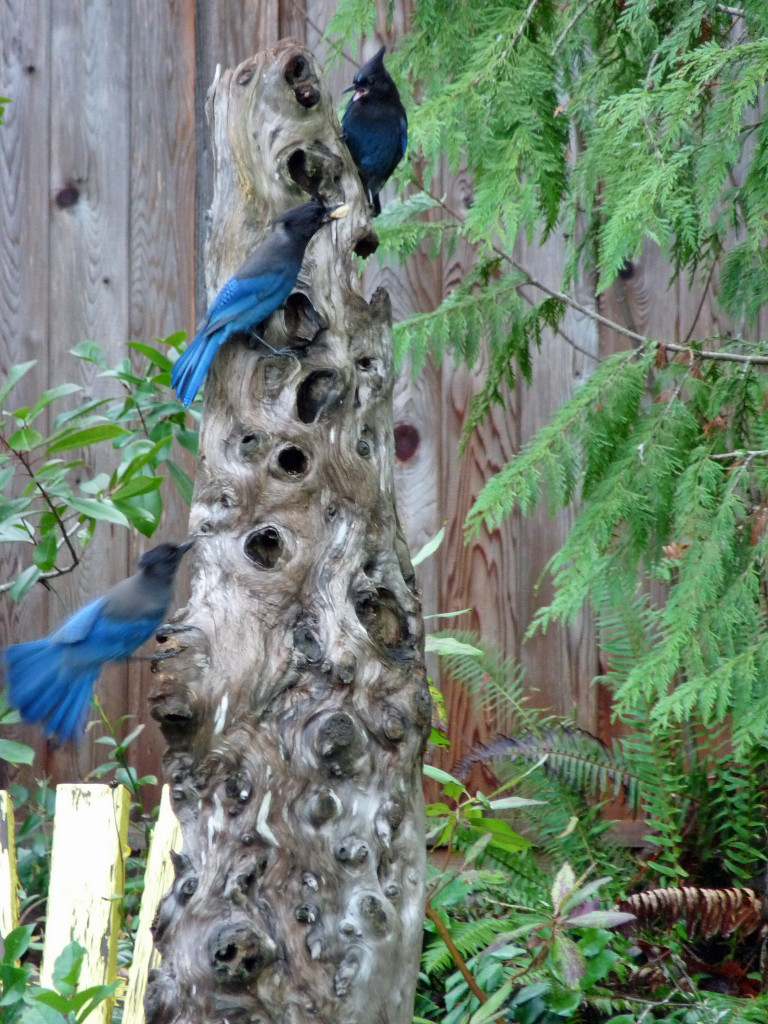
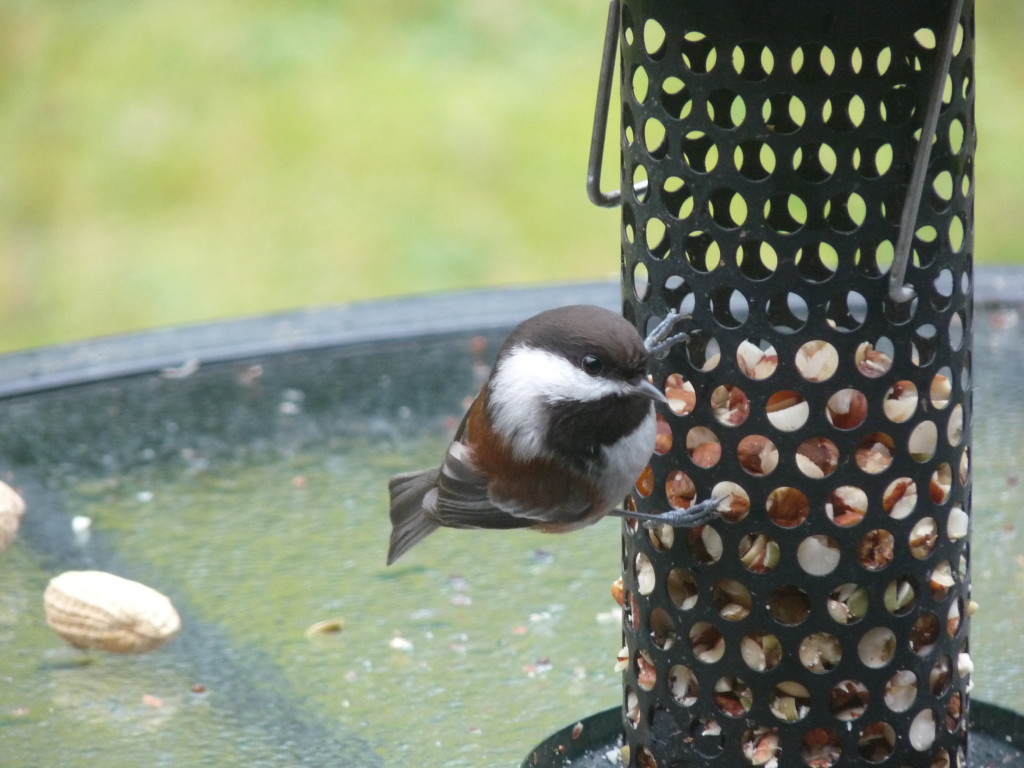
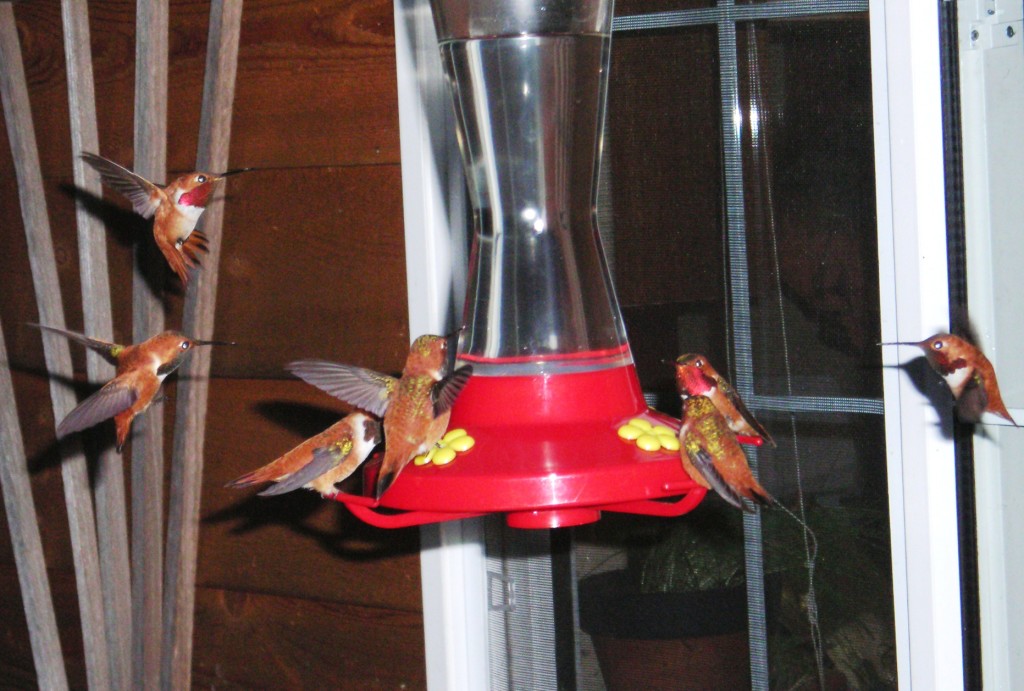
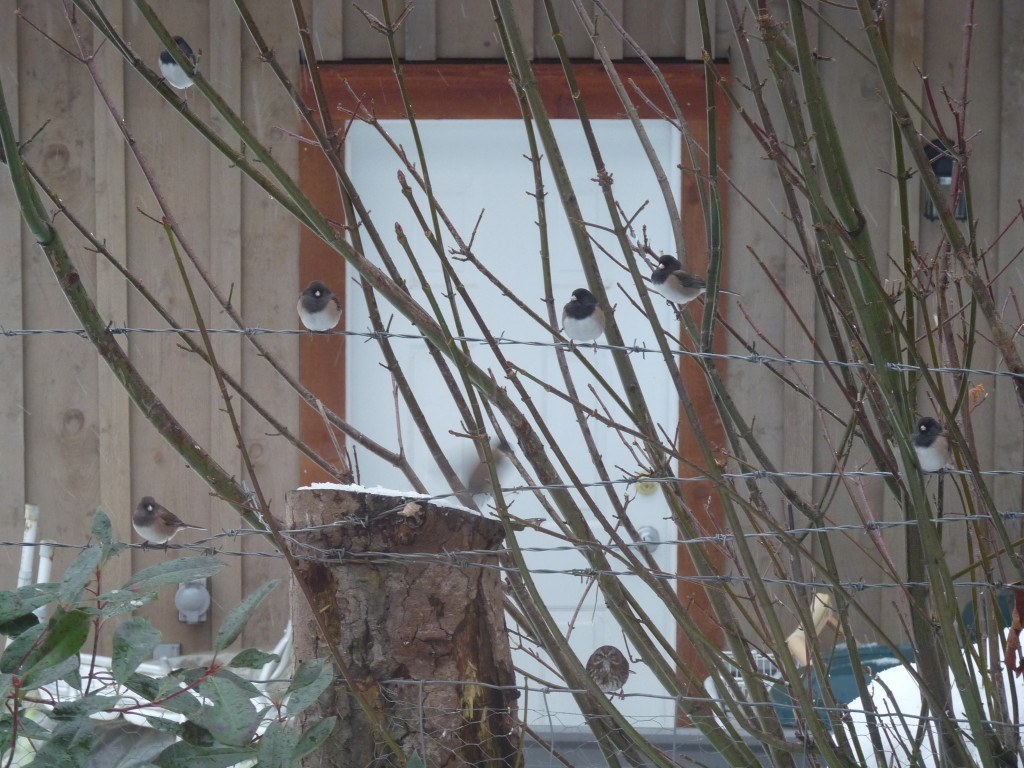
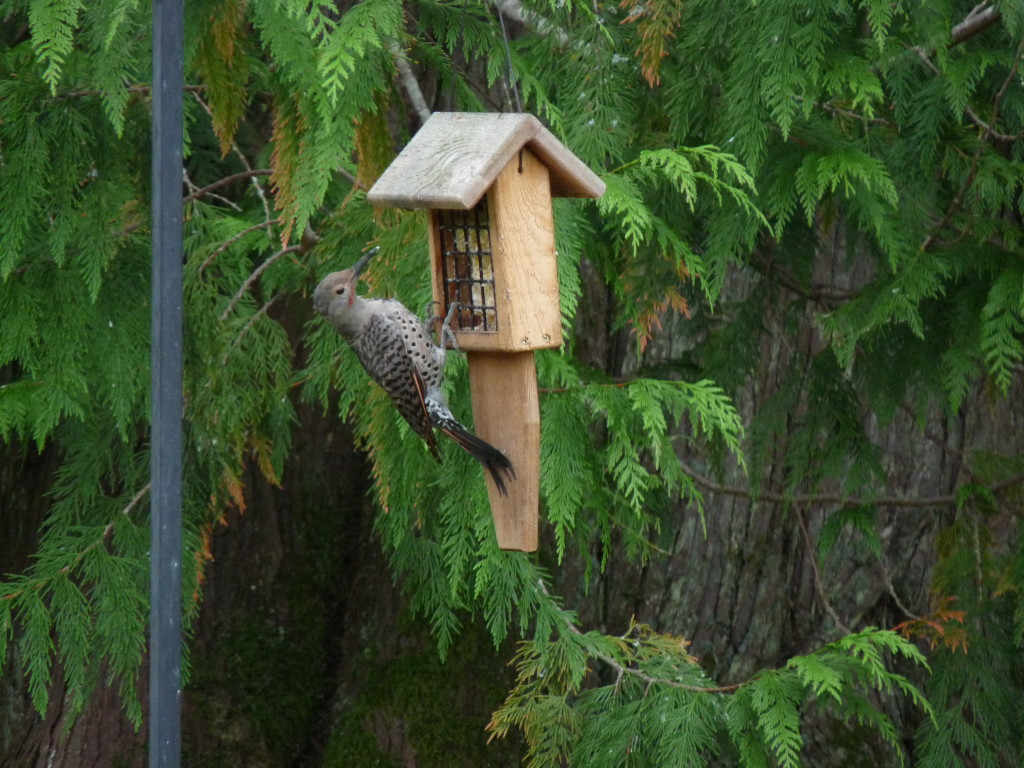
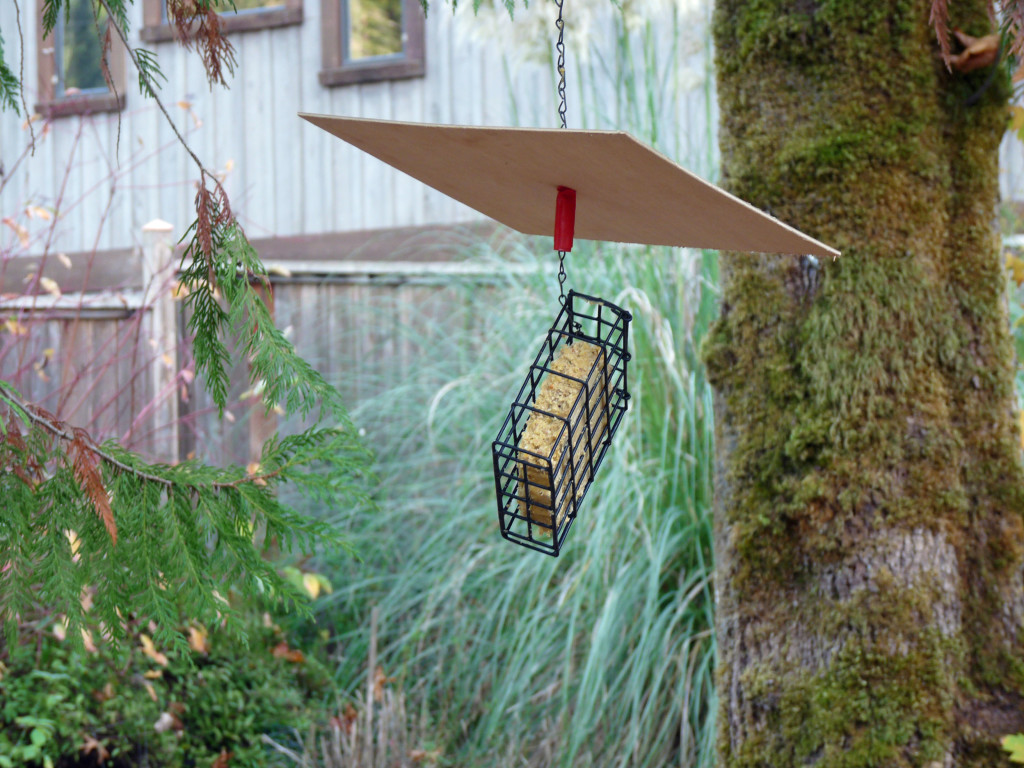
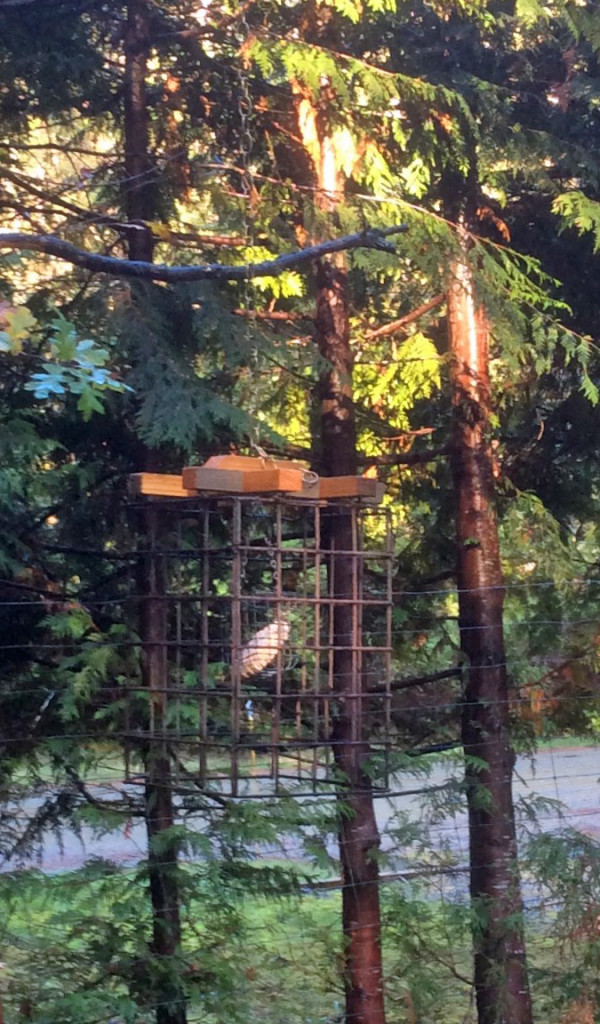
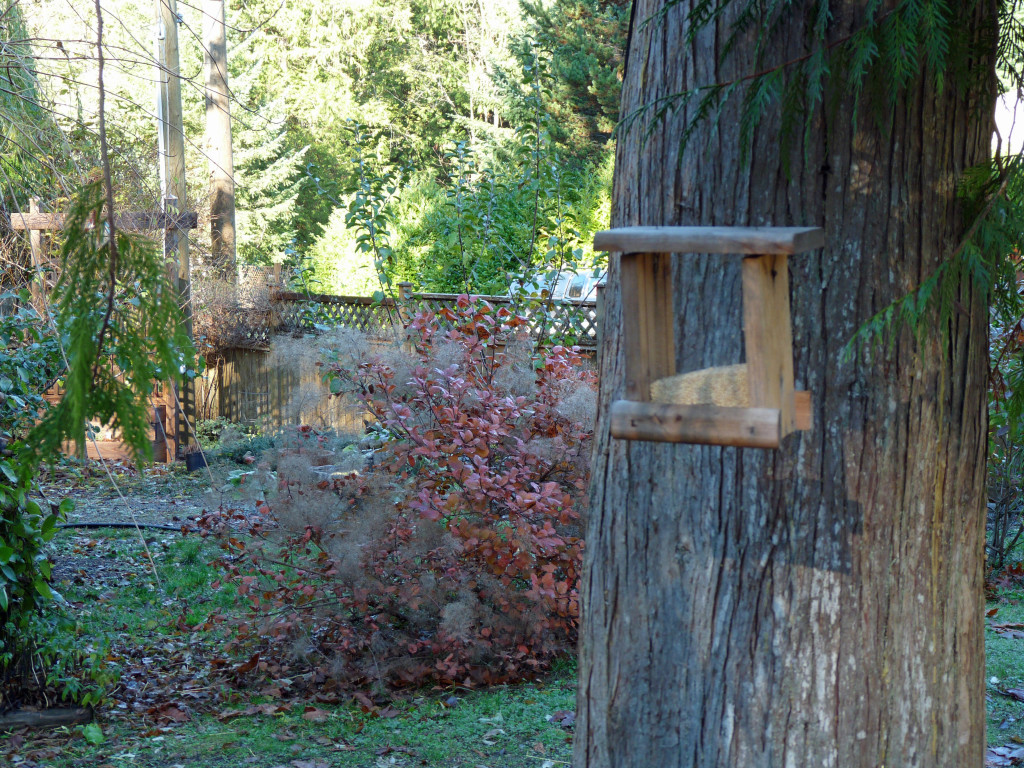
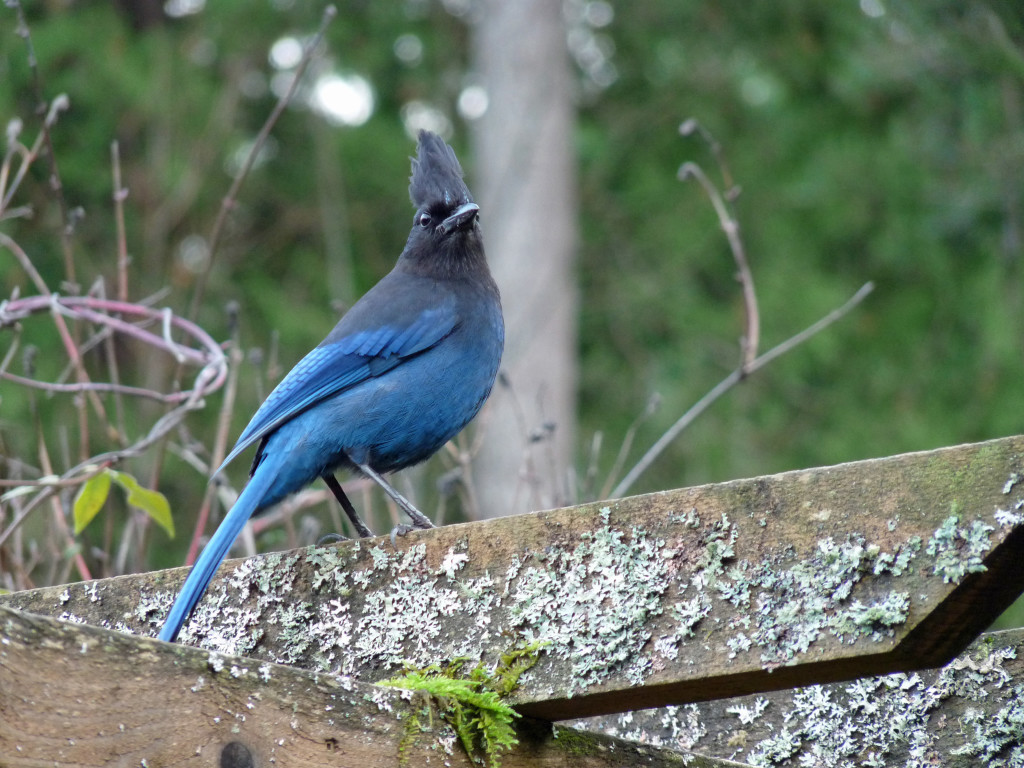
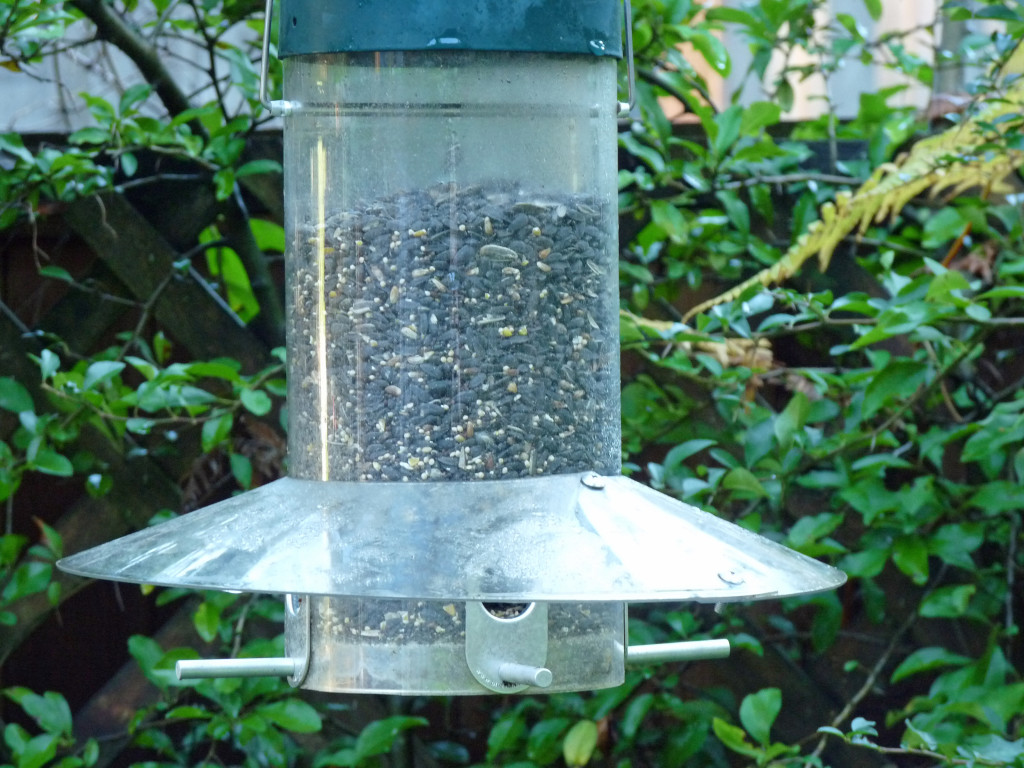
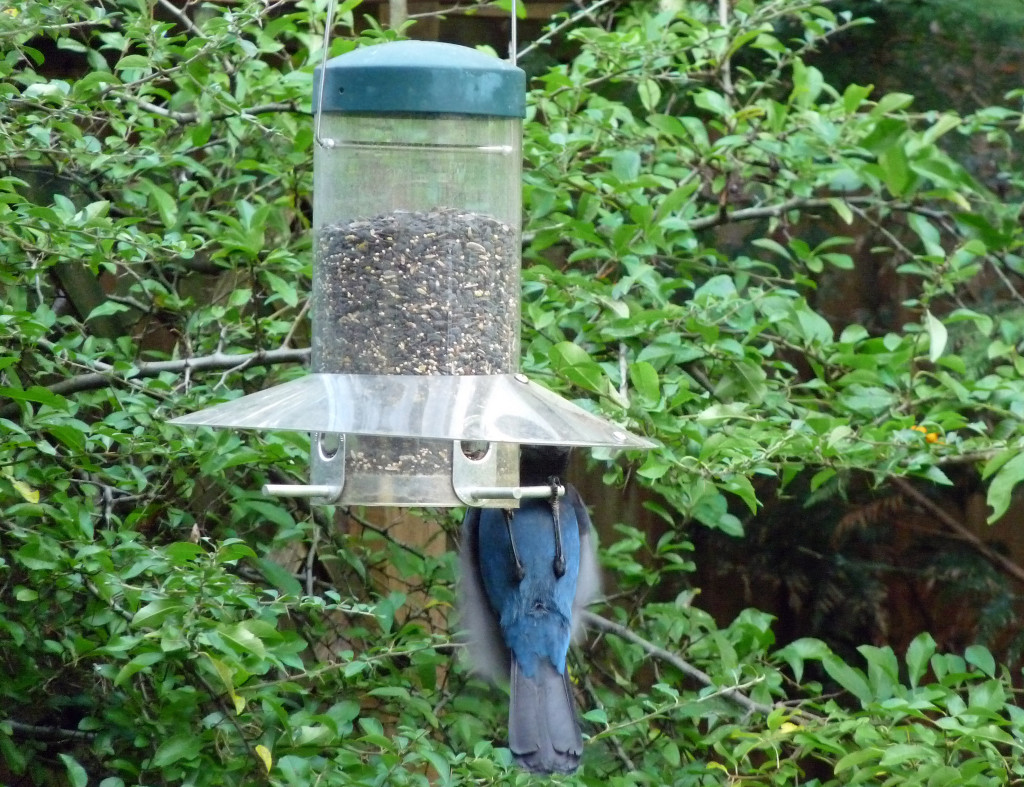
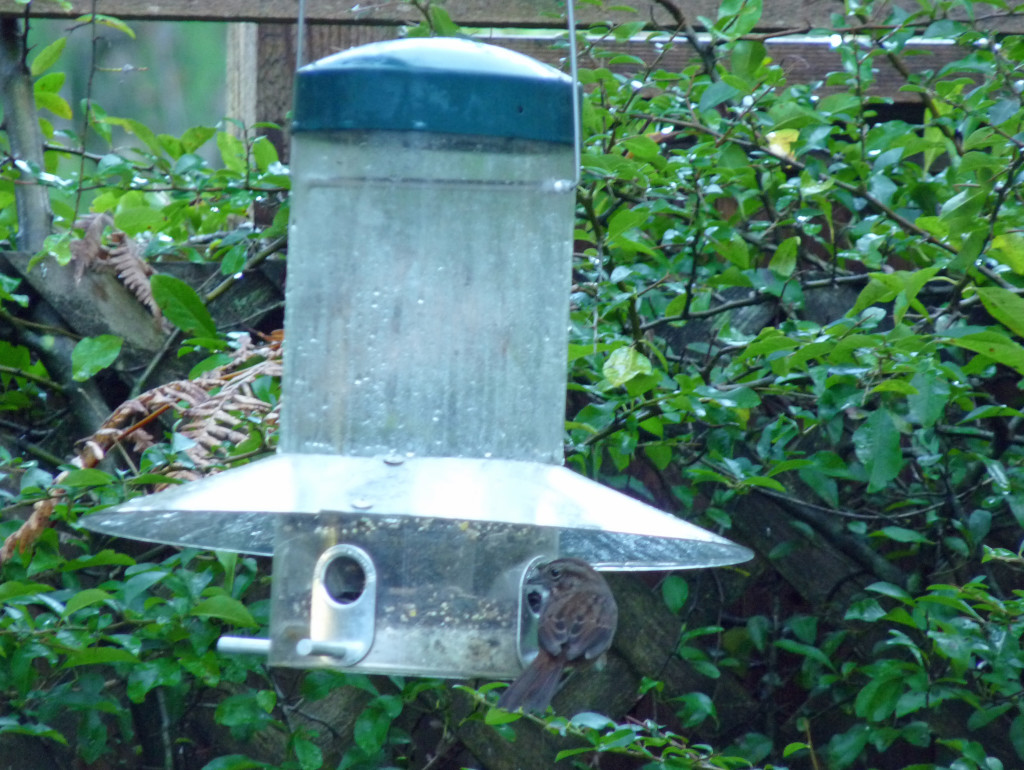
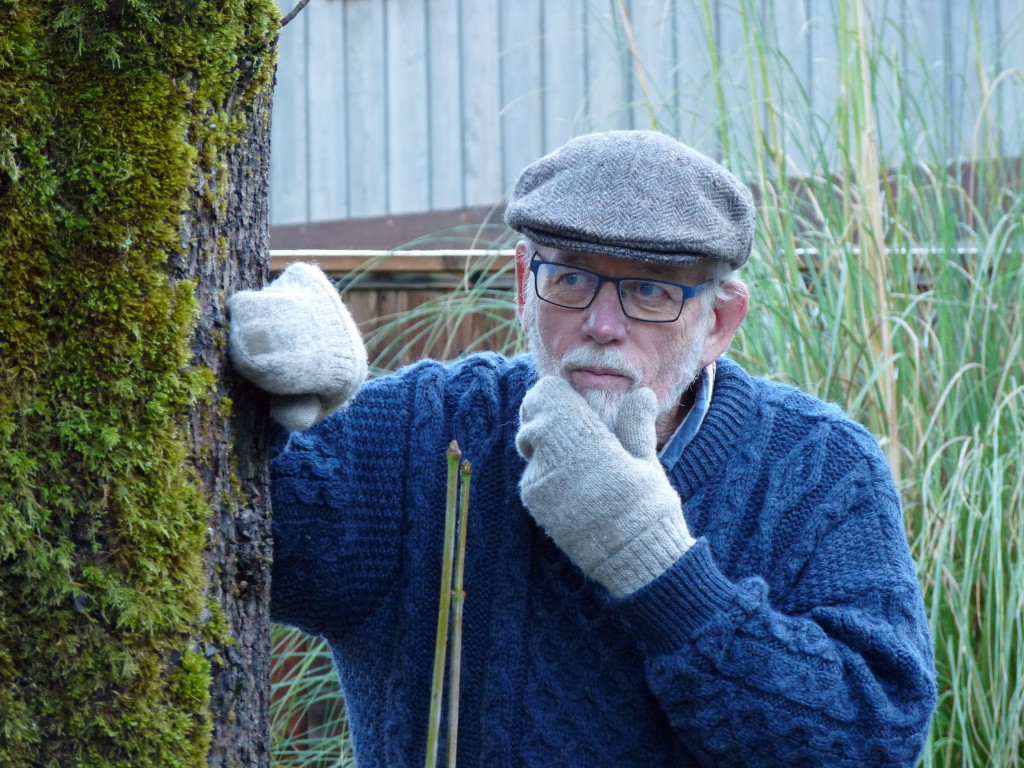
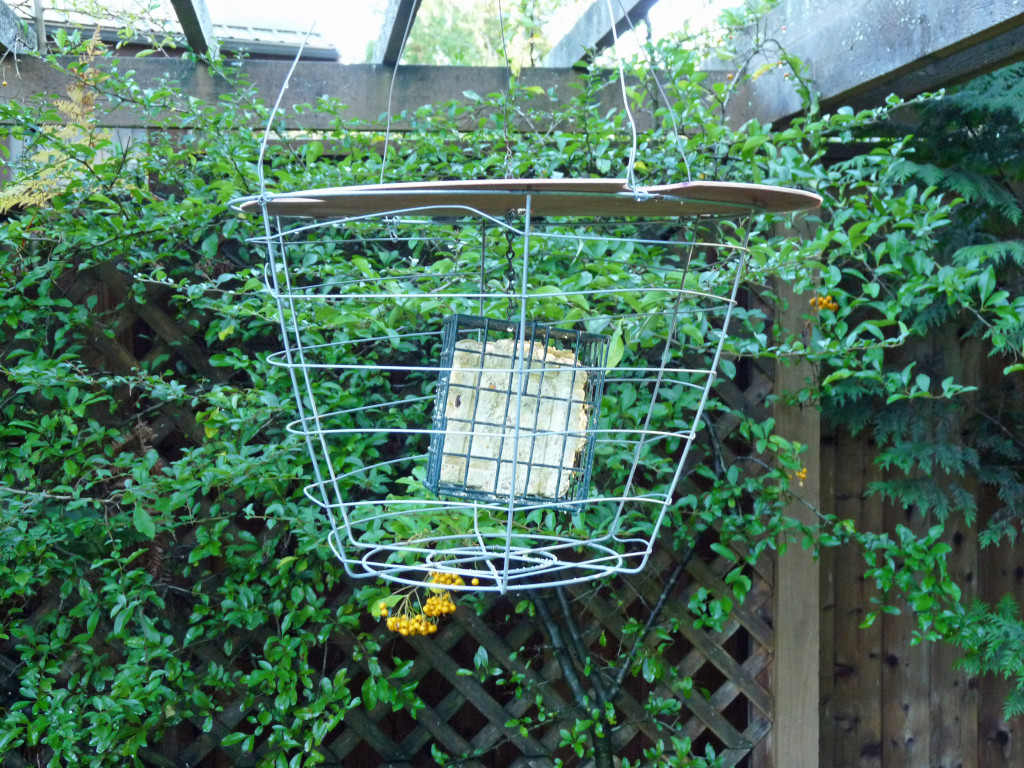
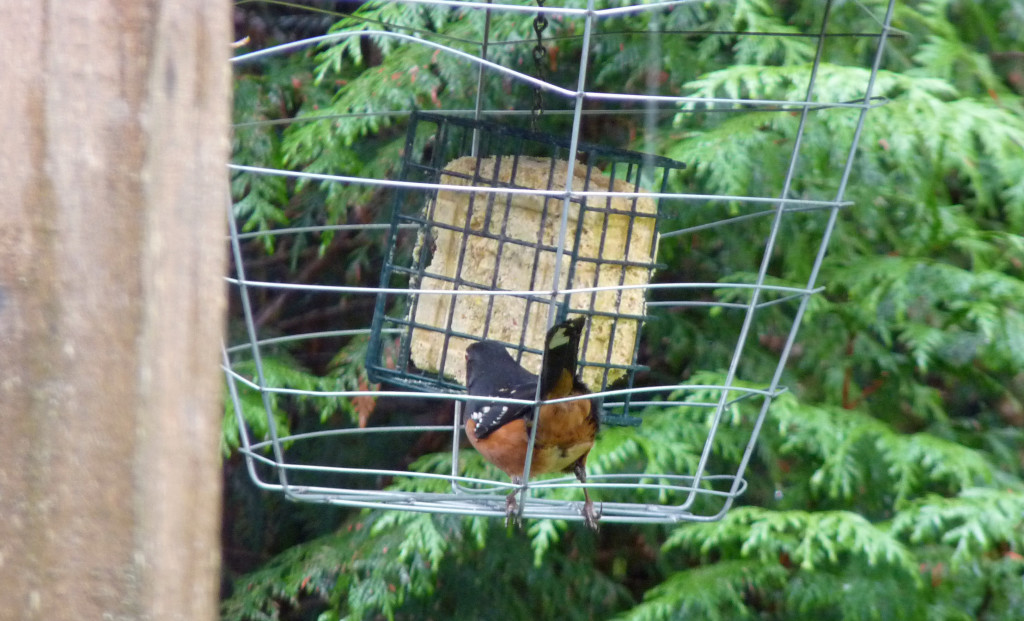
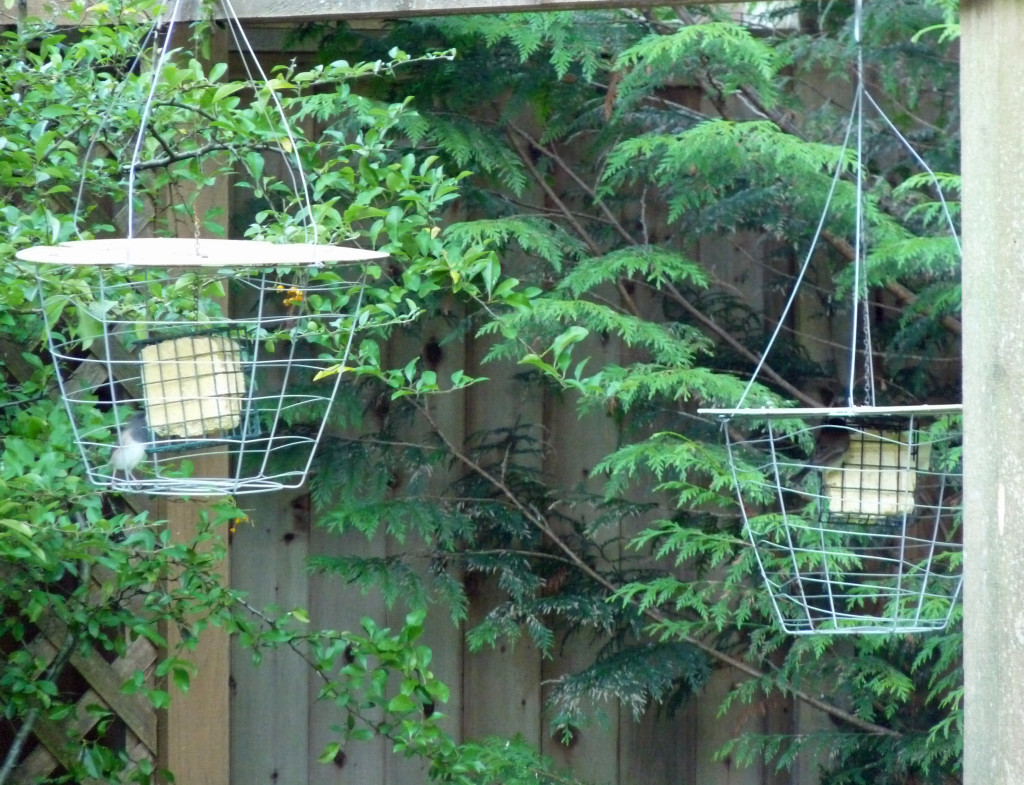
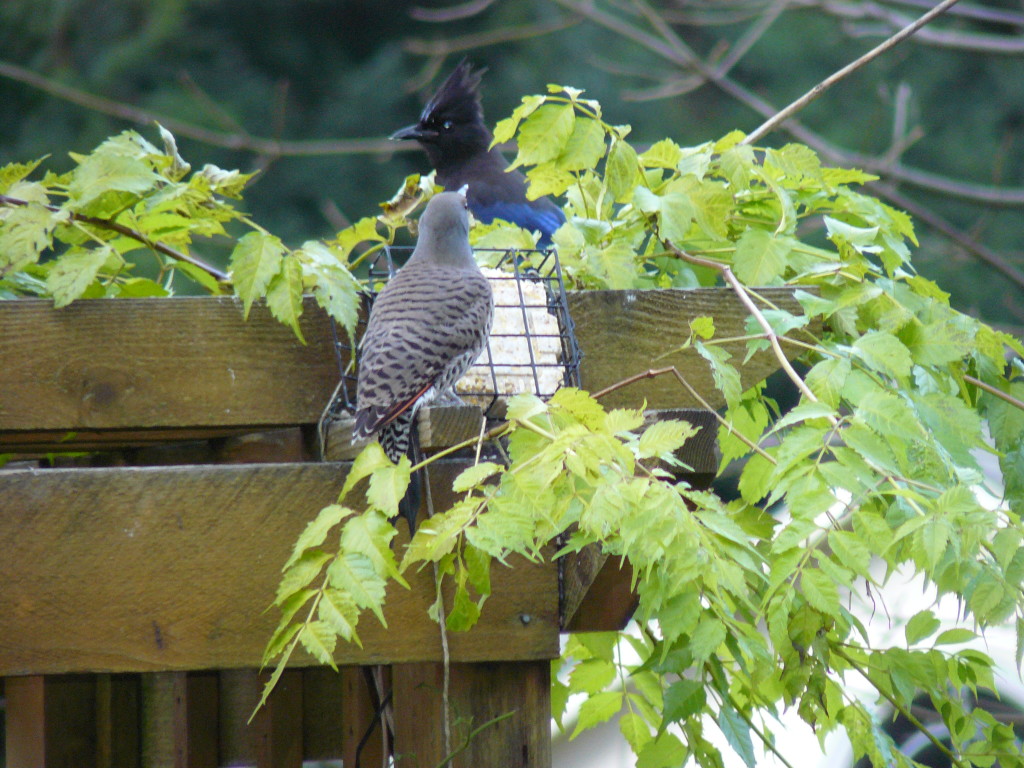
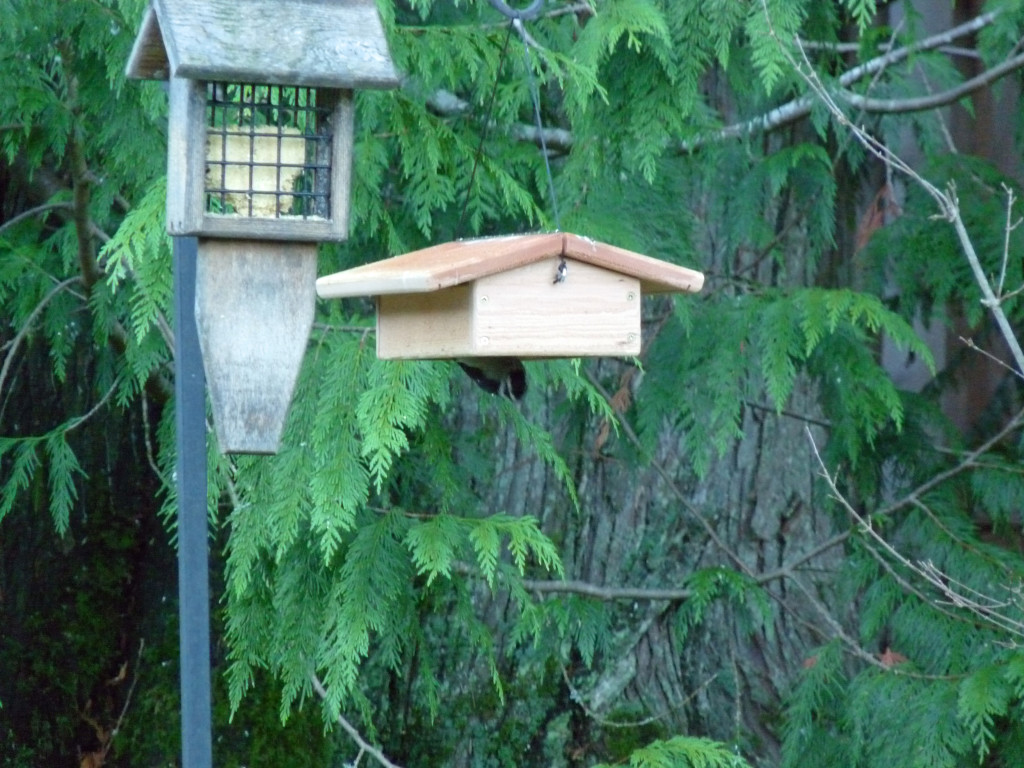
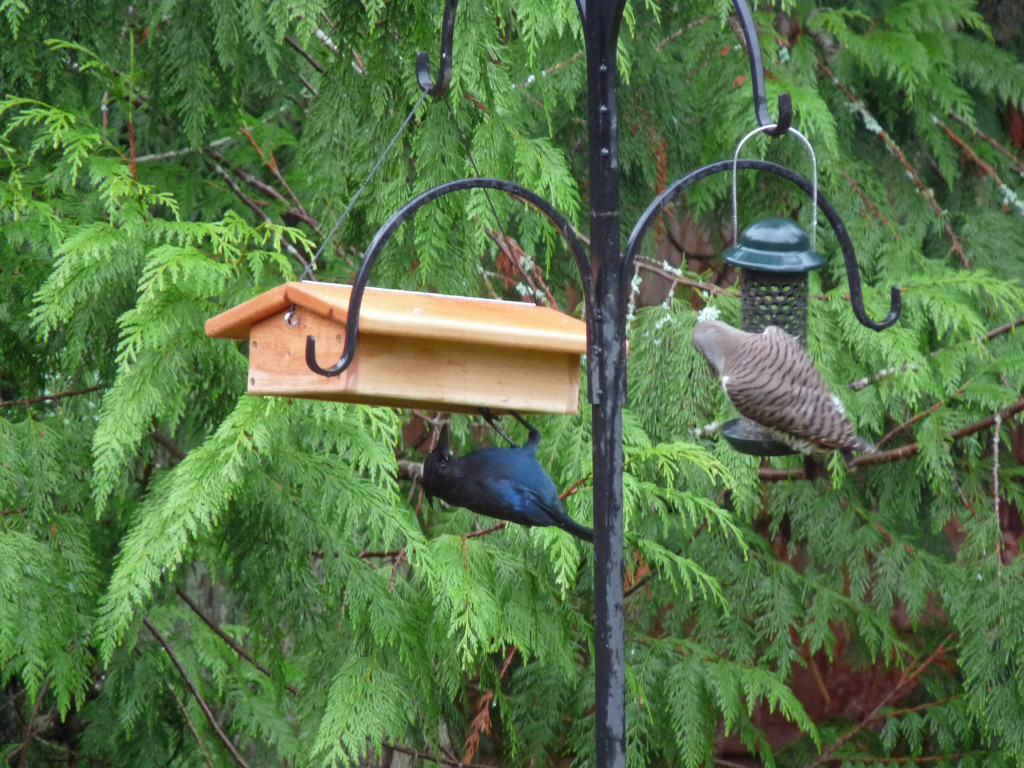
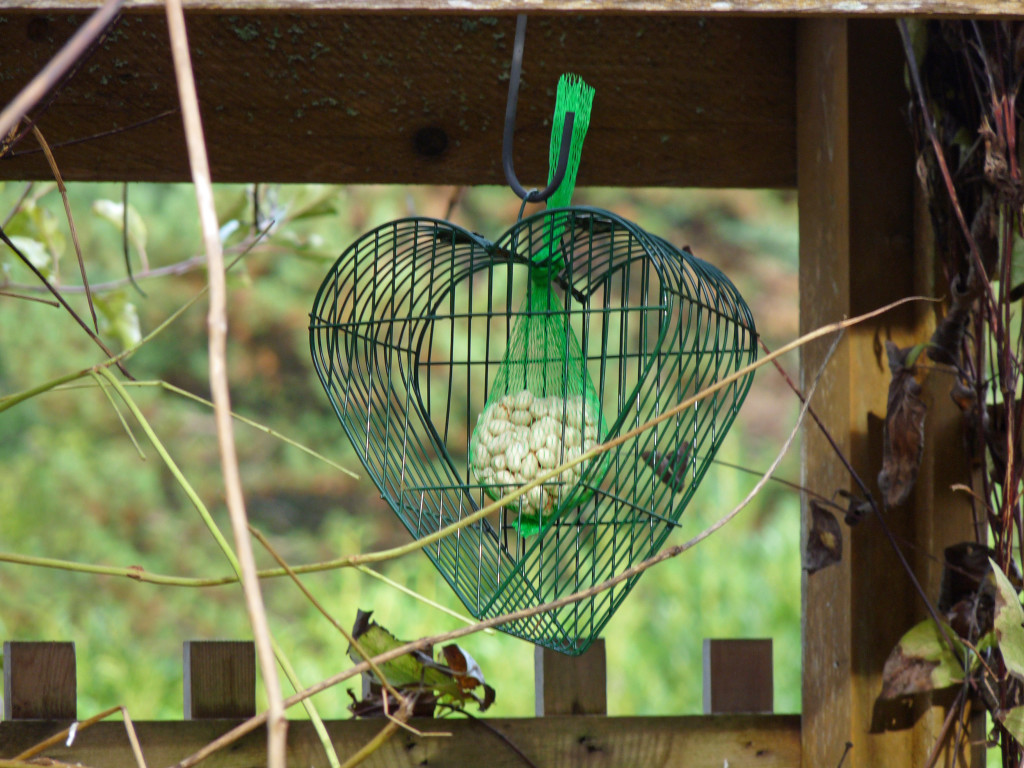
Thanks Michelle. Great idea! (Although it would take me a long time to fill a can since I don’t eat meat.) I am looking forward to seeing a Cardinal one day.
Happy holidays!
Thanks Nate.
Thanks Laura! Yes, I can see that working if you have 11 feeding stations!! Then it’s just the more the merrier … 🙂
The trick to jays is to have multiple feeding stations. Quit trying to fight them, just add more feeders and the little birds as well as the jays can all eat. I have about 11 feeding stations in my yard including sunflower, (black oil and chips), peanuts, suet, millet, and safflower seed. I have 18 Stellar jays at my house regularly. I also have lots of other birds at the same time…finches, pine siskins, 3 species of chickadees, 2 species of nuthatches, titmice, towhees, various sparrows, lots of juncos, doves….you get the picture. The more feeding stations you have, the less competition, and the happier and healthier your bird populations are…I also provide natural foods in my landscaping.
Pingback: Blog Birding #253 « ABA Blog
It’s humbling, isn’t it, being outwitted by some birds?! Ha!
Enjoyed the story & pictures Sharon. John isn’t finished trying to outwit the Jays, tho I’m not sure he can win the battle with them! We love them too, just wish they wouldn’t eat us out of house & home. They may be too smart for us! 🙂
Thanks for your comment Laurel. Your solution sounds good! Whatever works, eh?
We put a 2″ chicken wire mesh cage around our feeder, supported by a plywood base, four pieces of PVC piping, one in each corner and a plywood roof. The PVC piping is held in place by for elbows on the bottom and four bolts on the top.The jays can get their heads in to both the seed and suet but can’t get into the feeder. The flickers also have no trouble getting to the suet. It is not a thing of beauty but it works.
Angie — I’d be happy to send one to you – IF they’d obey my orders! But they never ever do!! 🙂
Thanks Barry. Glad to hear you outwitted your jays!
Thanks Rick. Maybe I’ll buy the birds ANOTHER Christmas present! 🙂
Glad you enjoyed it Tammie!
For a Hi-Tech seed feeder solution to the Jay problem, try a tube feeder with the squirrel buster. It is designed so the weight of a squirrel at the feeding ports causes the mechanism to drop down and block the ports. It is adjustable for the amount of weight to trigger it. I set ours so a Jay causes it to activate but is still ok for the smaller birds including the Spotted Towhee. The Jays soon gave up trying. We bought our feeder in town at our local wild bird feed store.
Thanks so much for the morning chuckle!
We tried the same as you many times and ways, we finally used a regular round cage with the seed tube removed. We then cut a length of clothes hanger wire, and bent the ends so that when placed through the cage at the top, it would hook around the cage ribs!. we then used a peanut sack (plastic) and filled it with our home made (or shop) suit, and while hanging it in the cage hole, passed the length of wire through and hooked it in. replaced the lid of the cage tight!. This has worked for all our smaller birds including the downy woodpecker every winter to our blue jay dismay!!, though they really tried!!.
I find it funny that your nuisance bird is at the top of my wish list!! I can’t wait to see a Steller’s Jay! (I’m in Toronto) LOL!!
Good luck!